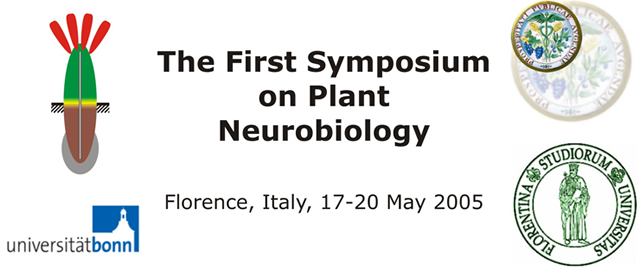|
Is ATP a signalling agent in plants? |
| |
|
Vadim Demidchik1,*, Sergey N.
Shabala2, Chris Nichols1, Adeeba Dark1 and Julia M. Davies1 |
1
Department of Plant Sciences, University of Cambridge, Downing Street, Cambridge , CB2 3EA , United
Kingdom
2 School of Agricultural Sciences, University of Tasmania, Hobart, Tasmania 7001,
Australia |
| *email:
vd211@hermes.cam.ac.uk
|
| |
|
Very low concentrations of extracellular purines (ATP, ADP and AMP)
can function as neurotransmitters in animal cells (1). At the cell surface they interact with specialised
receptors (“purinoceptors”) which form transmembrane cation-selective channels (P2X receptors) or
activate G-proteins (P2Y-receptors). Low concentrations of extracellular ATP (eATP) have recently been
demonstrated to modify auxin distribution, gene expression and gravitropic responses in Arabidopsis
roots (2). Since these effects have not been related to phosphorylation, a possible explanation is that
eATP can act in plants in a neurotransmitter-like mode (2). Here, we test the hypothesis that ATP is a
signalling agent in plants that functions in a similar way to animal neurotransmitters (activating ion fluxes
at very low concentrations). We have found that [eATP] as low as 300 nM induced transient elevations of root
([Ca+2] cyt) in plants constitutively expressing cytosolic aequorin (3). ADP and non-hydrolysable
analogues of ATP also caused [Ca+2] cyt increases, showing that the effect was not induced by
phosphorylation. UTP was far less potent than all tested purines. Purine-induced [Ca+2] cyt
increases were inhibited by classic purinoceptor blockers (suramin and PPADS) and by Gd+3 (3).
These results have now been confirmed by Jeter et al. (2004) (4). Using the MIFE ® technique we
have measured the effect of extracellular purines on net Ca+2 and K + fluxes in intact
Arabidopsis root epidermis. ATP, ADP and the non-hydrolysable ATP analogue ab meATP (up to
100 m M) simultaneously caused transient Ca+2 influx and K+ efflux.
Purine-induced fluxes were far larger in the elongation zone than in the mature epidermis. Using patch-clamp
we have identified p urine- induced whole-cell cation conductances and single cation channels in root
epidermis-derived protoplasts. Activity resembled animal ionotropic purinoceptors. We propose that
extracellular ATP and ADP are important signalling agents in plants acting via plasma membrane cation
channels.
- Khakh BS (2001) Nat Rev Neurosci 2: 165.
- Tang et al. (2003) Plant Physiol 131: 147.
- Demidchik et
al. (2003) Plant Physiol 133: 456.
- Jeter et al. (2004) Plant
Cell 16: 2652.
|

